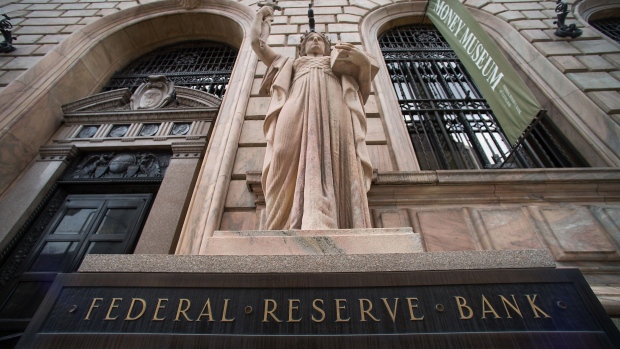May 29, 2024
Cleveland Fed Names Goldman Veteran Beth Hammack as President
, Bloomberg News

(Bloomberg) -- The Federal Reserve Bank of Cleveland appointed Beth Hammack, a Goldman Sachs Group Inc. veteran, as its next president.
Hammack, who was most recently co-head of global financing at the Wall Street heavyweight before her departure earlier this year, has more than three decades of experience in finance, capital markets, and risk management. She will replace Loretta Mester, who is stepping down June 30 after a decade in the post.
She will take office on Aug. 21, putting her in position to vote on monetary policy decisions starting at the September meeting. Hammack will be the fourth woman to lead the Cleveland Fed, which in 1982 became the first of the regional Fed banks to appoint a female president.
The Cleveland Fed announced a nationwide search for a new president in November.
Hammack, 52, joined Goldman Sachs in 1993, holding a variety of roles dealing with agency bonds, rates and repo trading. She was once seen internally as a top choice to become the next chief financial officer — a rare elevation for a woman to one of the bank’s most senior positions.
Her rise was driven in part by her ability to deal with regulators and government bodies after she made partner in 2010. She went on to chair the Treasury Borrowing Advisory Committee — an influential Wall Street group that has the ear of the US Treasury secretary.
Blake Gwinn, head of US interest rate strategy at RBC Capital Markets, called Hammack a “great pick,” noting he wouldn’t expect her to be inherently dovish or hawkish but rather oscillate depending on the situation.
“Obviously what I like the most though is another person at the table who is extremely plugged into markets and plumbing issues,” Gwinn said.
Mester Legacy
Mester, who has been a voting member of the Federal Open Market Committee thus far this year, has generally been considered one of the central bank’s more hawkish policymakers who support higher interest rates. Last week, Mester said she wants to see a “few more months” of data showing inflation is coming down before lowering interest rates.
Mester launched her career in 1985 as an economist with the Philadelphia Fed, moving up the ranks to executive vice president and director of research before she became president of the Cleveland Fed in June 2014.
Hammack “will provide great understanding of the financial markets, particularly the interest rate and funding markets,” said Kathy Bostjancic, chief economist at Nationwide Mutual Insurance Co. “Loretta Mester tended to lean hawkish. Time will tell how Beth Hammack leans.”
Over the past decade, it’s taken an average of eight months to select new regional Fed chiefs, according to data compiled by Bloomberg. It’s also involved greater involvement by the Fed board in Washington as well as extensive efforts to consider a diverse field of candidates.
Mester will vote at the next policy meeting on June 11 and 12. Chicago Fed President Austan Goolsbee will vote as an alternate at the July meeting.
Hammack’s appointment marks the second Fed president job filled this year. The St. Louis Fed named Alberto Musalem, whose career included executive roles at Tudor Investment Corp. and the New York Fed, as its new president in January. He started in April.
The incoming Cleveland Fed chief will become the third current regional Fed president with Wall Street experience, including Minneapolis Fed President Neel Kashkari, who previously worked at Pacific Investment Management Co. and Goldman before joining the Fed.
Not everyone thinks that’s a good thing.
“I don’t know what Cleveland was trying to do, but what they did was further the conception of the revolving door between the Fed and Wall Street and Goldman Sachs in particular,” said Aaron Klein, a senior fellow at the Brookings Institution.
--With assistance from Catarina Saraiva, Sridhar Natarajan and Alexandra Harris.
(Adds reaction to Hammack’s appointment starting in seventh paragraph.)
©2024 Bloomberg L.P.





